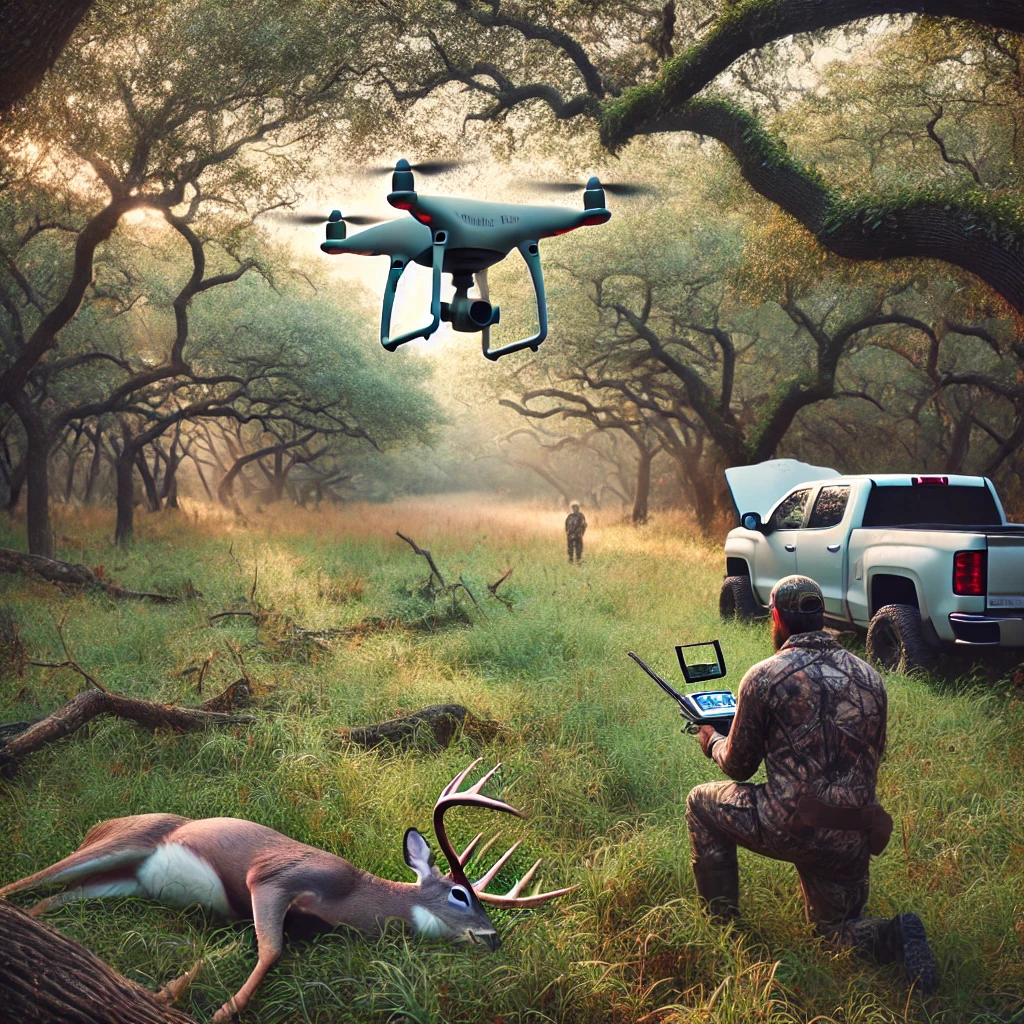The Ethics and Legality of Using Drones for Deer Recovery in Texas: Where’s the Line?
The idea of using drones in hunting, especially for deer recovery, is a hot topic these days. With all the new tech coming out, it’s tempting for hunters to want to use drones to track down game they’ve shot—especially if it means finding a wounded deer more quickly and ensuring it doesn’t get left in the woods. But in Texas, the rules around using drones for anything related to hunting are strict, and the ethical debate is far from settled. Let’s take a look at what’s allowed, what isn’t, and the pros and cons of using drones to recover downed animals.
What’s Legal in Texas?
Texas has some of the tightest regulations around drone use in hunting. According to the Texas Parks & Wildlife Department (TPWD), using drones to hunt, spot, or even photograph deer and other game animals is off-limits, with few exceptions for certain predators under specific permits. This restriction even extends to tracking downed game, so if you’re thinking of using a drone to locate a wounded deer, think again.
However, Texas does allow the use of drones for wildlife management purposes if a hunter or land manager obtains an Aerial Management Permit (AMP) from TPWD. This permit is specifically for managing certain species, like predators or nuisance animals, and doesn’t extend to regular game animals like deer. So, while you might see drones in action for wildlife management, they’re not allowed for typical hunting or deer recovery.
Drones are also banned entirely in any Texas Wildlife Management Areas, refuges, or national parks for hunting-related activities. Violating these laws can lead to serious fines and penalties, so it’s crucial to stay up-to-date on the rules if you’re a Texas hunter.
The Fair Chase Debate: Are Drones Too Much?
Texas’s restrictions on drones come down to the principle of “Fair Chase.” The idea is that hunting should be about skill, patience, and respect for the animal, not relying on technology to get a leg up. The Boone & Crockett Club, a longtime authority on conservation and ethical hunting, defines Fair Chase as pursuing game in a way that doesn’t give hunters an unfair advantage. By this standard, using a drone to track or recover a deer might feel like cutting corners, and Texas regulators seem to agree.
The ethical concerns don’t end there:
- Disturbance to Other Wildlife: When you fly a drone over an area, it doesn’t just impact the deer you’re looking for; it can disrupt other wildlife, causing stress or pushing animals out of their habitats.
- Skill vs. Convenience: Hunting traditionally involves tracking and recovery skills. When a drone finds the animal, it reduces the need for those skills and can make hunting feel a lot less personal.
The Case For Using Drones in Recovery

On the flip side, there’s a strong argument for allowing drones in certain situations, especially when it comes to wounded animals. One of the toughest realities of hunting is occasionally not finding an animal that’s been hit. With a drone, a hunter could cover a lot of ground quickly, potentially finding a wounded deer before it succumbs to its injuries or becomes lost.
This approach could make hunting more humane by helping hunters recover animals that might otherwise be left behind. No one wants to unintentionally waste game or leave an animal suffering in the woods. In tough terrains or thick woods, drones can be a real asset, giving hunters a bird’s-eye view to locate game that’s hard to track from the ground.
A Middle Ground? Responsible Recovery
Right now, Texas law doesn’t allow for drone-assisted recovery, but many hunters think there could be a middle ground. Some possible compromises could be:
- Permits for Post-Shot Recovery: A limited permit that allows drones solely for recovering downed animals could be a way to balance ethics and efficiency.
- Wait Time Rules: Setting guidelines around waiting times before using a drone for recovery (for example, a 12- to 24-hour window) could help maintain fair chase principles while reducing the chance of wasted game.
Alternatives to Drone-Assisted Recovery
If you’re hunting in Texas, you still have options to help recover game ethically:
- Blood Tracking Dogs: Many hunters in Texas use trained dogs to track wounded deer. Dogs are highly effective and work within the legal and ethical guidelines set by the state.
- Traditional Tracking: Old-fashioned tracking may take longer, but it keeps the hunt grounded in skills and patience, which many hunters value as part of the experience.
Final Thoughts
While the debate around drones and hunting continues, it’s important to stay within the law and consider the ethics that guide responsible hunting. Texas has chosen to prioritize fair chase principles over convenience for now, but that doesn’t mean the conversation is over. As drones continue to become more popular, it’s possible we may see new rules that find a balance between the ethical tradition of hunting and the benefits of technology.
Whether you’re for or against drone-assisted recovery, the goal is the same: hunting responsibly, respecting the animal, and making the most of the game you pursue. Until any changes happen, though, Texas hunters will need to rely on traditional recovery methods and remember that ethical hunting isn’t just about what’s allowed but also about what feels right. After all, as the conservationist Aldo Leopold once said, “Ethical behavior is doing the right thing when no one else is watching—even when doing the wrong thing is legal.”
By respecting these principles and the law, hunters can ensure that hunting in Texas remains a respected and valued tradition for generations to come.

